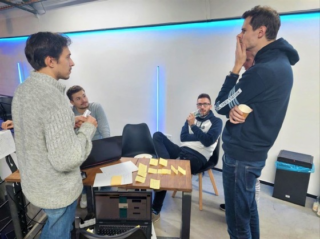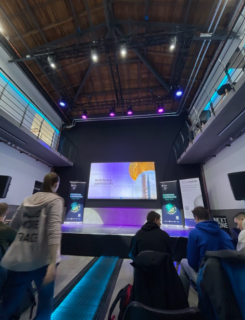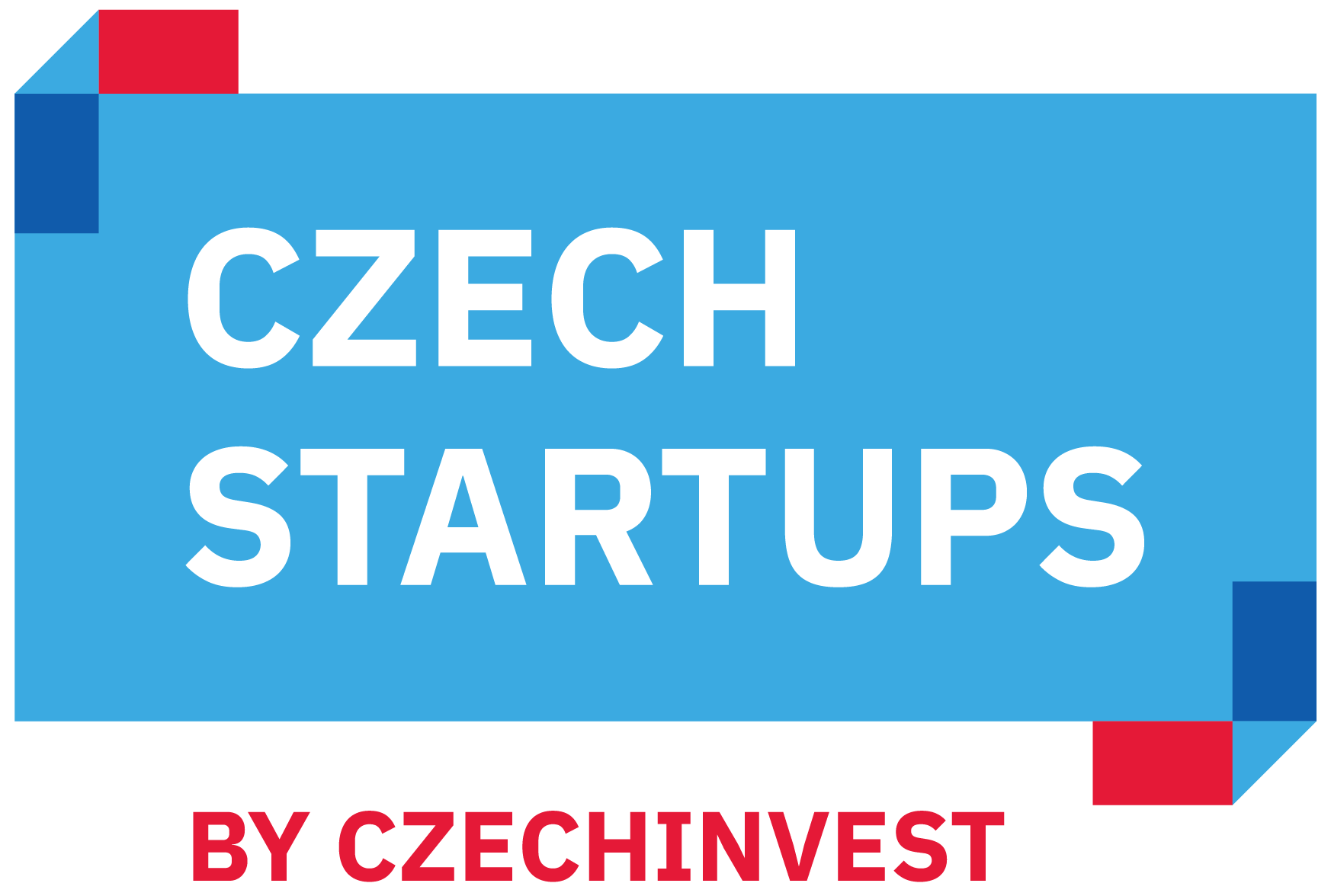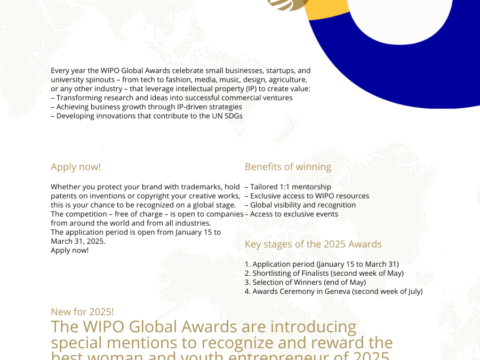Vlado Erdman and Tomáš Šindel are two former classmates from the Czech Technical University Prague who went their separate ways after school. After some time, they were brought together to participate in the national round of the ActInSpace World Hackathon which took place at the same time in 34 countries, 65 cities, and 5 continents around the world. The entire 2022 edition was attended by 1,700 participants, and it was two young Czech engineers Vlado and Tomáš who were the best in the Czech national round and will go to represent the Czech Republic at the international final in Cannes in February 2023. The Czech national round was organized by the ESA BIC Czech Republic space incubation program, operated by CzechInvest, which supports startups working with space technologies and satellite data.
Hackathons are very popular events, but they are not for everyone. For a few dozen hours, one faces challenges that test one’s endurance, expertise, and uniqueness. We sat down with Vlad and Tomas to ask them about their victorious 24-hour journey. Their assignment was primarily based on autonomously detecting objects in the satellite’s field of view, determining their trajectories, and initiating avoidance maneuvers to avoid, for example, “space debris.” How fast do objects fly in space? On what principle does their winning model work?
Get your coffee ready and read our interview.
1) Vlado, Tomas, the ActInSpace hackathon calls for solutions in various products and services of “tomorrow” thanks to space applications. How is this close to your heart? I know from the narrative that it was mainly a challenge for you and a desire to experience something new. You didn’t even think about winning 😉.
Vlado:
It seems that expansion into space is the only way to ensure sustainable development for humanity. Humans and Earth together form a giant organism and like most organisms, we need to, get energy from outside to survive and develop. But what we are doing today is the opposite. Every year we draw on our reserves without replenishing them, which gradually leads us to collapse.
I’ve decided to dedicate my life to making human expansion into space more accessible, and the first step on the way is getting fuel from asteroids. ActInSpace seemed like a great opportunity to get out into the space community and meet partners and mentors for whom the word “impossible” is a sign of underdevelopment. At the same time, the hackathon was something I’d always wanted to try and never got around to.
Tomas:
I completely disagree with Vlad on this one. I don’t think space travel is the only way to sustainable development – but that’s for another story. I studied mechatronics. I took this path for two reasons: firstly, I like technology and secondly, I am interested in the combination of different technical disciplines that can often create innovative and unique products. I believe that progressive technologies, combined with the development of human knowledge and ethics, have a great chance to improve the lives of all people on Earth and beyond. My current field of study is focused on the former, as I work in the field of detection for autonomous cars. Therefore, I was intrigued by the idea of embarking on a challenge focused on place two – space. When Vlado first offered to participate in ActInSpace, I was immediately intrigued because I saw it as a chance to not get comfortable. But at the same time, I have to give you the benefit of the doubt that our primary goal wasn’t to win, and overall I gave us little chance of winning because the competition was really strong – CTU Space Research, for example. But we had something that set us apart from everyone else.
2) Your solution is quite heavy on computation, technical complexity, etc. How do you tackle such a challenge in one weekend, when you find out on Friday night that you need this calculation right now and you can’t move without it?
Tomas:
I wouldn’t put it that black and white. Of course, you can’t do a detailed analysis of orbital mechanics on your knee. But you can make an informed guess. We have had enough time to read the literature on the subject and find similar problems that have been solved before. So we did not have to do a complete derivation. Add to that a little bit of engineering’s daily bread – simplifying complex problems – and your calculation is done! It should be noted, however, that this calculation serves as an estimate, which is good for primary system design and determining if the concept makes sense. For a detailed simulation, you need to have more information.
Vlado:
In retrospect, the hackathon taught me to make progress in projects many times faster. I used to proceed step by step and spend hours on research, but in the later steps I hit a barrier that changes everything and I could throw away the previous research. We couldn’t afford to do that at the hackathon.
At each hurdle quickly: generate ideas, pick the best, and move on. In the beginning, there was a tendency to brood over details, walk away from priorities, and prolong decisions, but the closer the deadline got, the faster the decisions and the clearer the priorities became. When we were 2 and a half hours away from presenting and I realized that it was taking longer to prepare for the presentation and we had missed some important priorities, I learned the extreme of quick decisions thanks to my mentors. Two seconds, 5 ideas, pick one and move on.
I’m taking away a bunch of cool insights for fast progress. The three essentials are:
a) Eyes on the goal with every decision, it helps not to get lost in the details and deliver results.
b) The goal is to solve the target problem, everything else is a waste of time and a distraction.
c) There are multiple targets – in our case, not just the customer, but the jury and the assignor.
3) Space debris detection is a timely and winning topic for you. Why did you choose this direction?
Tomas:
There were a lot of options and it was hard to choose between them. However, we both tended towards this one from the beginning. From my side, it is probably because the topic is close to my field – autonomous detection. I also already knew from various channels that this is a real problem that will need to be addressed soon, given the exponential increase in the number of satellites in orbit. At the same time, I was fascinated by the physics of the project. What could be more exciting than dodging debris flying at 7 kilometers per second? Not even the Matrix came close!
Vlado:
I agree with Tom! This is a super engineering challenge and a real problem. The more space debris there is in the Universe, the more damage is done to satellites that produce more debris. This threatens to make it impossible for humanity to continue space exploration, the so-called Kessler Syndrome. At the same time, part of the brief is satellite autonomy, which will greatly reduce the operating costs of satellite companies and has the potential to be used in my next project.
4) In just a few weeks, you will be competing against other winners across 5 continents at the international finals in Cannes. How are you preparing?
Tomas:
We are consolidating our goal for the final. It hasn’t changed. It’s still going to be all about having fun, learning a lot, getting to know people, and breaking the rules a bit – in a controlled and respectful way. Staying ourselves, because that’s what it’s all about, showing how far we can go without changing our goal. But I won’t spoil our preparation too much. But judge for yourself when the time comes.
Vlado
“It’s more fun to be a pirate than join the Navy.” – Steve Jobs
Fingers crossed, fight back!
source photo: ESA BIC Czech Republic








